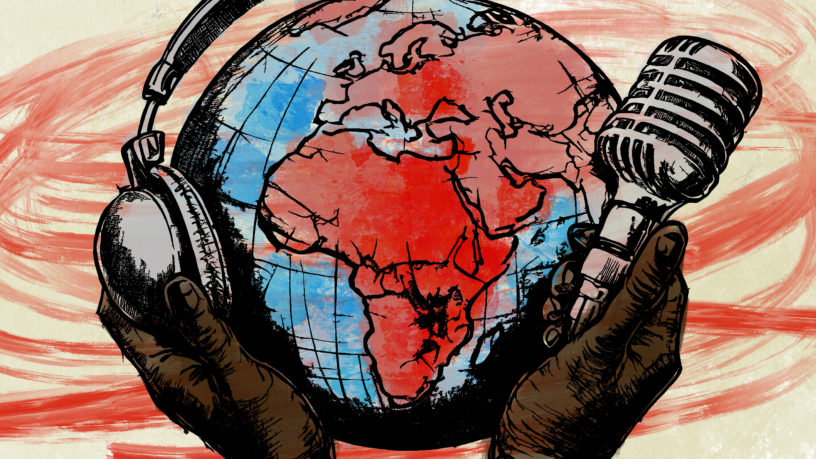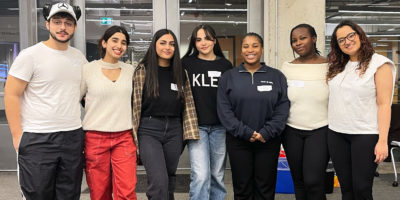By Bana Yirgalem
Toronto Metropolitan University (TMU) is known for its diversity throughout its student body and the faculties. According to the 2020-2025 Academic Plan, “A major strength of our university comes from the diversity in our TMU family, which reflects the essence of Toronto, the diverse, multicultural community we call home.” One of those predominant communities is the East African student community.
What do you think of the term ‘media’? A source of entertainment? Reliable? Media has been known to be a powerful tool for individuals to share news and information with millions around the world. For example, TikTok videos, Instagram posts or tweets have been effective ways to share the news, especially on urgent matters.
#BlackLivesMatter, #GunViolence, #FreePalestine and #MeToo are some movements that have gained worldwide attention and recognition due to media coverage.
According to a LinkedIn article, “Social media has revolutionized modern activism and social justice movements, providing a platform for amplification, real-time information dissemination, and global community-building.”
However, the global crisis in East Africa has gone seemingly unnoticed on social media. Some affected countries include Ethiopia, Sudan, South Sudan and Somalia.
Some people might be aware of these issues and some may not be, it all depends. I’m aware of the conflicts because I’m East African. But when I mention these situations to anyone, most don’t know or understand what I’m talking about. Why may that be? In my opinion, it all goes back to the lack of social media conversations surrounding East African conflicts.
According to the Humanitarian Coalition, “Conflict, climate change and hunger are putting lives at risk in countries across East Africa.”
However, I want to highlight the three countries currently experiencing conflicts within their communities. Also, there’s information on how different each countries’ media laws differ from each other.
Ethiopia
Ethiopia is known to have violent internal conflict within its country. The first one was with the northernmost region of Tigray which according to Global Conflict Tracker claimed the lives of over 600,000 people. Now, it’s involving militia groups from the regions of Amhara and Oromia.
According to the tracker, “Conflict began to emerge in the two regions in the spring of 2021, coinciding with the escalation of the Tigray War. During the Tigray War, Amhara groups largely allied with the central government and the Oromo sided with the Tigrayans. In the aftermath of the war, the central government announced a crackdown on the operations of regional security forces.”
According to Global Conflict Tracker, “in an effort to consolidate central military control and respond to ethnic violence in the two regions, the Ethiopian government is fighting former allies and enemies alike, including the Amhara regional forces and non-state militias from Amhara and Oromia.”
In late 2023, the central government “escalated its military operations in Amhara, while its peace talks with the largest Oromo militia collapsed for the third time.”
Ethiopia’s government has ties to several conflicts with other countries like Eritrea and Somalia. However, it’s hard to gain knowledge on these situations due to the fact that they have placed a social media ban since March 2023.
According to Voice Of America Public Relations, which is known for their pro-Tigray stance, “Some Ethiopian nongovernmental organizations and civic institutions, including the Center for Advancement of Rights and Democracy, have cited concerns about the ban’s impact on the right to freedom of expression and how it has hampered documentation of rights abuses.”
Sudan
Currently, Sudan is facing one of the worst military conflicts that are happening around the world right now. The war between the Sudanese Armed Forces, under Abdel Fattah Al-Burhan, military commander for the country, and the Rapid Support Forces, a powerful paramilitary group under Hemedti.
According to Global Conflict Tracker, “Sudan’s two warring factions remain locked in a deadly power struggle after more than six months of fighting.” The conflict has killed more than 10,000 people and displaced 5.6 million, 80 per cent of whom are internally displaced, and hundreds of thousands of whom have fled to unstable areas in Chad, Ethiopia and South Sudan. The UN has pleaded for more support amid dire humanitarian conditions and a cholera outbreak.
Meanwhile, many largely uncoordinated mediation efforts have failed to produce results and other states have taken sides in the war. According to tracker, The Sudan People’s Liberation Movement-North rebel group also “joined the fighting, breaking a ceasefire in southwestern Sudan, and the conflict risks destabilizing the fragile peace in neighbouring states.”
When it comes to the media laws in the country, the laws aren’t as strict as the Ethiopian government’s, yet, it’s still an issue when it comes to sharing important information on issues within the country. For example, according to the Sudan Media Guide, the newspapers were still able to have critical comments, yet their production failed due to financial issues.
Also, a “major crackdown on journalists, local and international media organizations, and punitive laws have been enacted to silence critics of the junta.” For context, Junta means a “military or political group that rules a country after taking power by force.”
Somalia
According to the Global Conflict Tracker, “Al-Shabaab continues to conduct attacks both within Somalia and in neighbouring states, targeting civilians, the Somali state, and the African Union Mission in Somalia (AMISOM).” Meanwhile, security forces in Somalia that are working to counter Al-Shabaab—including forces from the United States, AMISOM and the Somali government—have all undergone transitions in recent years. AMISOM was tasked with handing over authority to Somali security forces. Still, this transfer of responsibility faced multiple delays and setbacks, with the African Union (AU) Peace and Security Council voting to extend AMISOM’s mandate until the end of 2021. However, AMISOM remained in place until April 2022, when it was replaced with the AU Transition Mission in Somalia (ATMIS).
With around 18,000 troops, ATMIS essentially serves as an extension of AMISOM and is not due to fully depart until the end of 2024. In 2022, U.S. president Joe Biden “approved the redeployment of hundreds of U.S. special forces to Somalia, reversing the [Donald] Trump administration’s withdrawal.”
According to Global Conflict Tracker, Somalis are constantly facing all kinds of threats. Between 2022 and 2023, Somalia faced its worst drought in 40 years, resulting in tens of thousands of deaths. The United Nations warned, “400,000 of the 6.6 million Somalis in need of aid are facing famine-like conditions, and 1.8 million children are at risk of acute malnutrition in 2023.”
When it comes to the media laws in Somalia, according to Media Landscapes, “Somalia has had no effective media regulation since 1991, until a law was brought in 2012, which sparked huge protests from journalists.”
Also, the federal government created a “federal media strategy” in 2017. The strategy includes transforming the government-owned media outlets into a public broadcasting system. Yet, six years later, this hasn’t been deemed active, according to Media Landscapes.
As a result of each of these countries having different media laws, the way their news is shared differs from Canada. However, just because those countries may have laws blocking their news doesn’t mean we should shy away from educating ourselves on issues around the world.
Most countries may have media laws that block out new organizations from being shared. However, journalists in Canada still try to find ways to share news in many forms so everyone can be informed.
Taking the initiative to learn about other conflicts and issues around the world gives you the opportunity to have more educated conversations with individuals who could possibly make an impact in the future.











Leave a Reply